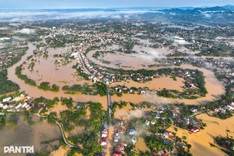Typhoon Megi claimed its first victim in the Philippines on Monday with authorities reporting that a fisherman had drowned as the storm brought heavy rain and strong winds.
 |
| Military rescuers and volunteers prepare life-saving equipments at Camp Aguinaldo in Manila on October 17, 2010. |
The man drowned in a river in the northern city of Tuguegarao on Monday morning as Megi approached the area, the nation\'s civil defence chief, Benito Ramos, told reporters.
The northeastern provinces of Cagayan, in which Tuguegarao is situated, and Isabela, were the first to feel the impacts of the typhoon.
Megi, dubbed a "super-typhoon" by government relief agencies, was just off the northeastern coast of the Philippines at 11:30 (0330 GMT), packing wind gusts of up to 260 kilometres per hour, the government weather station said.
Megi was expected to cut across the northern part of Luzon throughout Monday, then exit out towards Vietnam on Tuesday, the weather station said.
The highest level of a four-step storm alert was raised over Isabela and surrounding provinces while lower alerts were in effect over most of Luzon.
Isabela and other provinces in Megi\'s direct path are mostly agricultural and fishing areas, with a few million residents who are well-drilled in preparing for the many storms that hit each year.
Over 3,000 people had already been moved from their homes in the northern provinces as part of a "pre-emptive evacuation" of threatened areas, the civil defence office said.
Flights to and from northern Luzon were also suspended and ships there were told not to leave port.
Military, police and relief agencies had positioned supplies and rescue units to provide swift assistance to any affected areas, the civil defence office reported.
Rubber boats, large trucks, heavy equipment and rescue divers were all on standby, ready to be dispatched to areas hit by floods or blocked by landslides, the office said.
The US military and UN representatives were also due to meet with President Benigno Aquino to see how they could help, GMA television reported.
The Philippines is battered by an average of 20 typhoons a year, some of them deadly.
More than 1,100 people were killed when tropical storm Ketsana and typhoon Parma struck Luzon within a week of each other in September and October last year, triggering the worst flooding in recent history.




















